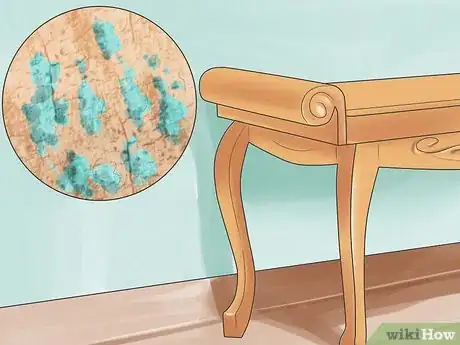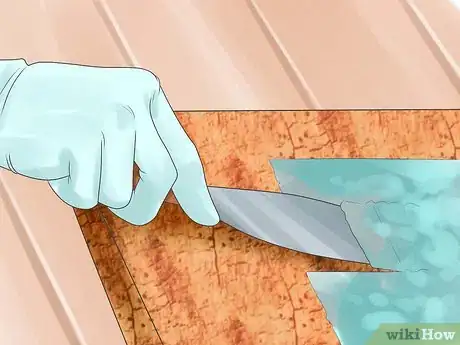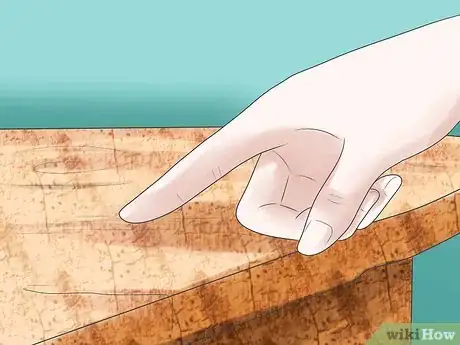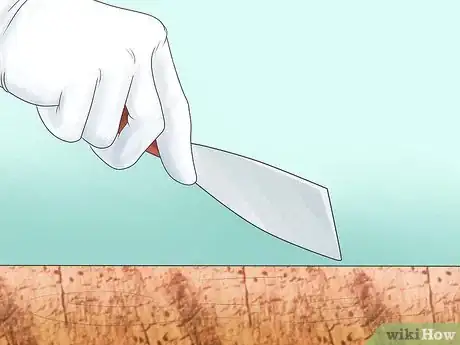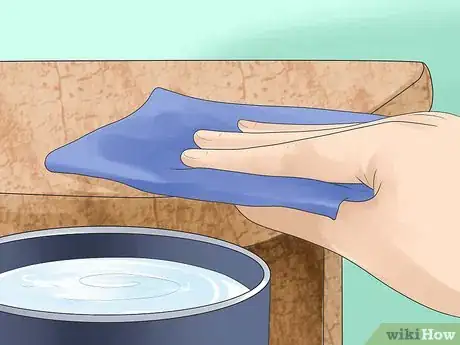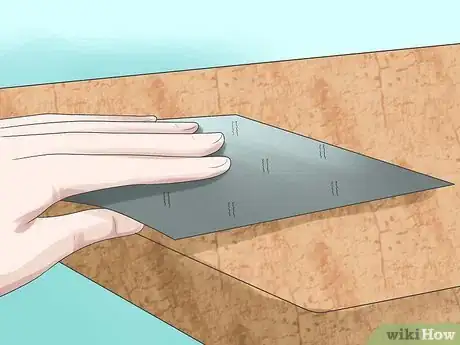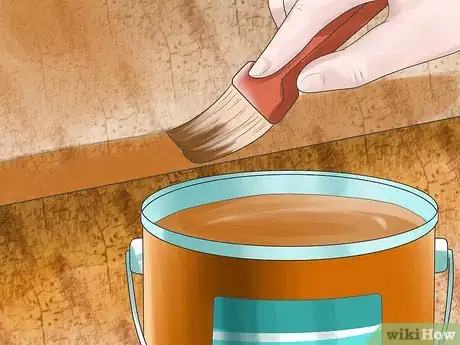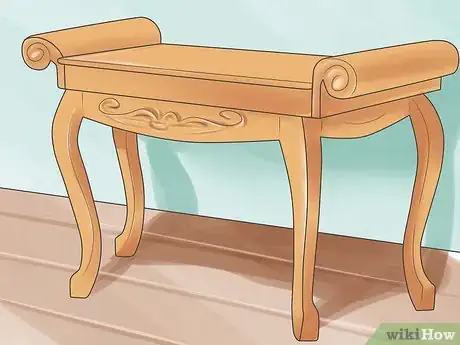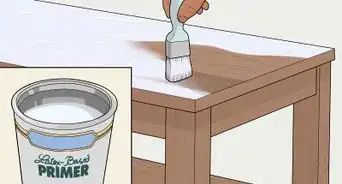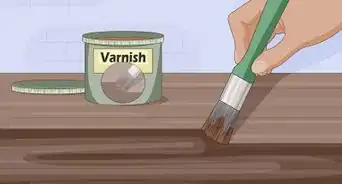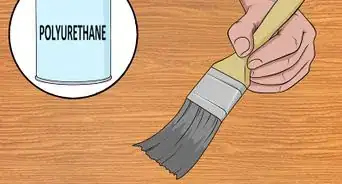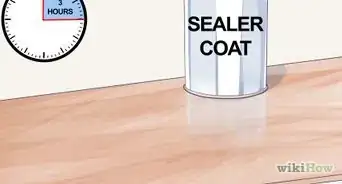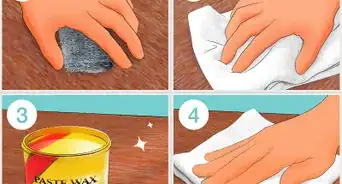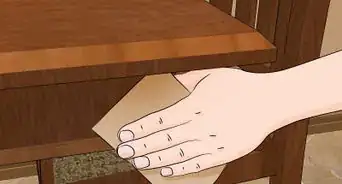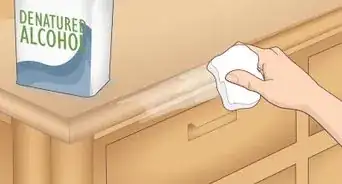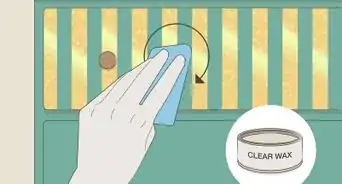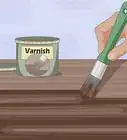This article was co-authored by Tanglewood Sue. Tanglewood Sue is a DIY and Upcycling Specialist and the Owner of Tanglewood Works out of Hyattsville, Maryland. With over nine years of experience, Sue specializes in upcycled painted furniture and other handmade, personalized, and sustainable goods. With her passion for art and reinvention, marketing experience, and Bachelor’s Degree in Broadcast Media, Sue has been able to create a business that not only provides quality pieces but empowers customers to create their works through her library of DIY tutorials and live demos as well as DIY supplies.
This article has been viewed 179,782 times.
Valuable tips on refinishing antique furniture. Tips to refinish like a pro without damaging the integrity or value of the piece. Maintain your investment.
Steps
-
1Confirm that you are not removing the patina from an expensive antique. What you don’t want is to take a $1,000 table and refinish into a $100 table.[1]
-
2Start by reading the instructions. Before you begin, always read the labels and understand the instructions on of the chemicals and solvents you are using. Also, ensure that you work in a well-ventilated area. The fumes can cause dizziness or death if not used in a properly ventilated space. Also, your local hardware specialist can serve as a great source of information with this project, its steps, and material needed.Advertisement
-
3Determine if washing or stripping the finish is best. Decide whether the old finish should come off or if a thorough cleaning will do. Perhaps a rejuvenating coat of varnish will bring it back to its original luster. If cleaning an unpainted piece, hand cleaner containing pumice used with a toothbrush to get into crevices works well. After cleaning you will know better what you are working with.
- In many instances you can save a lot of work by just refinishing parts of the piece. For example the drawer front, the top of a table or bureau or maybe just the arms and seat of a chair may need some work. After making those repairs, you will have rejuvenated the rest of the piece.
-
4Using stripper or paint remover. Always use rubber gloves and a mask when using stripper.[2] Use lots of remover and do not brush back and forth. Put on a thick layer of stripper with one stroke. The stripper will form a skin, like pudding. Place plastic trash bags or newspaper on top of the stripper to help keep the stripper from drying out. Always position the piece so you are working on a horizontal surface, this also keeps you from doing too much at one time. Place a piece of masking tape over the backside of any key and knob holes so the stripper doesn’t spatter the back of the drawer.[3]
-
5Allow the stripper to work. Wait until you can rub down to bare wood with one finger without scraping. That is when you can start to remove the stripper. If the piece has a carving, plan to leave the stripper on those areas longer.
-
6Remove the stripper. Periodically peek under the plastic to determine how quickly the stripper is working. You may need to apply additional stripper if it the finish is thick. When the finish is soft, scrape it off with an expired credit card or a putty knife. Note that a credit card, or plastic tool with similar sharp edge, is less likely to damage the wood.[4]
-
7Wash off the stripping solution. When the stripper has softened the finish, scrape off as much as possible, so you can wash down the piece with the appropriate solvent or water. It is very important to read the container to determine appropriate washing liquid. Scrub with a stiff brush with course wood chips, hamster bedding from the pet store will work just fine! This will clean and dry the piece around spindles and carvings.
- If the piece you are stripping is veneered, be careful when using water as to not lift the veneer. When refinishing, it is more desirable to make every effort to bring forth the original surface and not produce a new one.
-
8Sanding. To remove light scratches, which is all you should do, use fine grit sandpaper. As a novice, the finer the sandpaper you use, the longer it will take to make a mistake. 120 C open coat aluminum oxide will do nicely. To remove any stripper residue and set the wood up to accept a finish, 220 open coat aluminum oxide is good. To sand various shapes and moldings on your piece you can use old felt.[5]
- Important information on sandpaper: The 120 refers to the grit size. The lower the number, the coarser the paper.
- You can also sand the furniture with steel wool.[6]
-
9Stain the piece. It is best to purchase a leading brand of pigmented wiping stain, which are color fast, direct-to-wood stains formulated to develop and highlight the grain of all wood species.[7] Brush the stain on, leave it for a moment and wipe it dry with a dry rag. Make sure to use rubber gloves and a mask during the staining process as well.[8]
- Stains can be cross-mixed to achieve different tones. For example, adding mahogany to walnut will give a reddish brown color or ebony to walnut combines for a deep dark brown.
-
10Place all used rags in an approved airtight container. Do not leave them on the bench all bunched up, as spontaneous combustion may cause them to burst into flames! If you do not have a container, lay the rags out flat to dry, preferably outside. Any rags containing solvents are extremely dangerous.
-
11Finish your project. A simple method is to wipe on the finish. There are even wipe on polyurethane finishes for optimal protection. Put the finish on with a soft cloth, keeping it wet until it doesn’t seem to want to absorb any more finish. Next, wipe it dry. Wait 24 hours, give the piece a light sanding with 320 sandpaper and apply the finish again. You can do this as many times as you wish, but three or four coats should suffice. Start out with a gloss finish and the last coat should be a semi gloss. Your piece is now ready for that special spot in your home.
Community Q&A
-
QuestionIs it possible to get rid of a water stain on an antique hutch?
 Melissa TakacsCommunity AnswerTry applying a generous amount of mayonnaise to the affected area and let it set for an hour or so. Wipe it off and clean it with a damp, soapy cloth. The mayo "magically" makes the water stain disappear. Not sure how it works, but it does - give it a try!
Melissa TakacsCommunity AnswerTry applying a generous amount of mayonnaise to the affected area and let it set for an hour or so. Wipe it off and clean it with a damp, soapy cloth. The mayo "magically" makes the water stain disappear. Not sure how it works, but it does - give it a try!
References
- ↑ https://www.bhg.com.au/how-to-restore-antique-furniture
- ↑ https://www.realmilkpaint.com/blog/tips/refinishing-antique-furniture/
- ↑ https://www.bobvila.com/articles/how-to-use-paint-stripper/
- ↑ https://www.bobvila.com/articles/how-to-use-paint-stripper/
- ↑ https://www.primermagazine.com/2012/spend/how-to-refinish-old-furniture
- ↑ William & Shannon Latil. Furniture Refinishing & Home Remodeling Specialists. Expert Interview. 29 October 2021.
- ↑ Tanglewood Sue. DIY & Upcycling Specialist. Expert Interview. 24 March 2021.
- ↑ https://www.primermagazine.com/2012/spend/how-to-refinish-old-furniture
